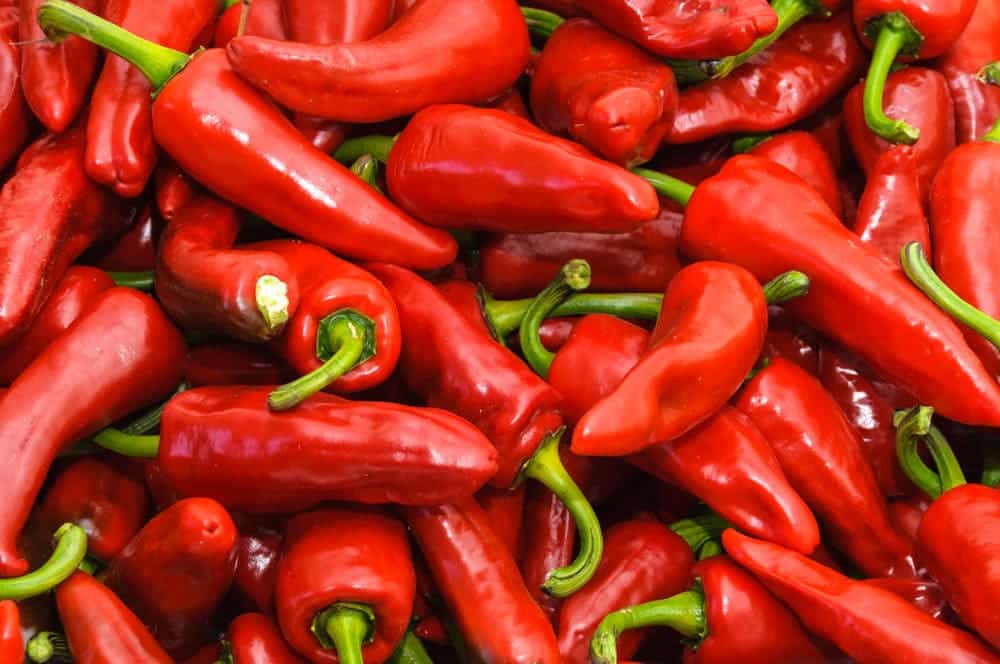
Every foodie will believe that there is no flavor and life in dishes if there is no space. The culinary world is loaded with different types of peppers, and piment d’espelette is the fanciest one out there (look at the name!). However, finding this pepper is a daunting task, so let’s have a look at the easier substitutes!
Piment d’Espelette Substitutes
This is the red pepper with origination from South America and Central America. These peppers are originally green but gain the vibrant red color once they mature. These peppers tend to grow to six-inches with a slight curve. The endpoint of the pepper is extremely defined. These peppers are available in solid, powdered, and dried forms.
This pepper is not extremely hot (it is a maximum of 4,000 SHUs). That being said, people consider it sweeter rather than hot. The flavor profile is fresh, and fruity and the heat hints are extremely mild. There is a mild spiciness in these peppers, along with slight smokiness. On the contrary, the grounded and dried peppers leave a strong smoky flavor.
Piment d’espelette is usually used in Basque cuisines and is used in multiple dishes, such as vegetables, seafood, and lamb. This pepper is only available if you live in France or surrounding regions. It is widely used to make piperade (it’s a sauce made with tomatoes, onions, and different peppers). So, if you are trying out the recipe that needs piment d’espelette but cannot find it, let’s check out the substitutes!
1) Paprika
We understand that you want the substitutes that are readily available, which is why paprika makes a perfect option. Paprika is readily available in the market, and we are certain that you’ve it in the kitchen already. Paprika has a mild sweetness and smokiness (yes, just like piment d’espelette). In addition, it has an amazing heat profile that complements the recipes.
In particular, it’s best to choose the non-smoked hot paprika. This is because the mild paprika will have a milder flavor and has a pimento base. The hot paprika has a similar heat. It’s best to opt for non-smoked paprika because it reduces the smokiness. As for piment d’espelette, it has a mixture of sweetness and smoke, which makes non-smoked hot paprika a fine choice.
Paprika is the ground spice which is made by grinding different types of peppers that result in unique heat level and flavor. Paprika has a red color that looks extremely vibrant. As for hot paprika, it’s made from the combination of bell peppers and chili pepper.
2) Cayenne Powder
If your spice rack is out of paprika as well, you can opt for cayenne powder as it’s readily available. This spice has a heat level that adds flavor to your recipe. While substituting piment d’espelette, you can simply add a pinch of cayenne powder. This is because cayenne powder can be extremely hot with a neutral flavor profile. However, your recipe might lack the sweetness of piment d’espelette.
This is hot chili pepper which is widely used for flavoring dishes. It is made from cayenne which are red-colored peppers with long and skinny structure. It usually has a curved tip. Also, if you have fresh cayenne, you can also add it for replacing piment d’espelette. It is suitable for cooking spicy recipes. All in all, the cayenne powder is a combination of different chili peppers.
Cayenne powder can be added to curries, cheese dishes, meat, casseroles, stews, and hot sauces. Lastly, it goes perfectly in the egg dishes, so it’s a versatile spice!
3) Aleppo Pepper
If you want the best substitute out there, we suggest that you opt for Aleppo pepper. However, you might have to run to the grocery store to buy this pepper. It is available in fresh as well as powdered form. It has a raisin-like and earthy taste, which makes it suitable for rustic recipes. Again, Aleppo pepper is two folds hotter as compared to piment d’espelette, so add lesser quantity.
This pepper is native to Turkey. When the pepper ripens, it is deseeded and grounded in coarse form. It can be added to salads, beans, dip, and seasoning the meat. What we love about this substitute is the promising flavor and will enhance the taste profile of your recipes.